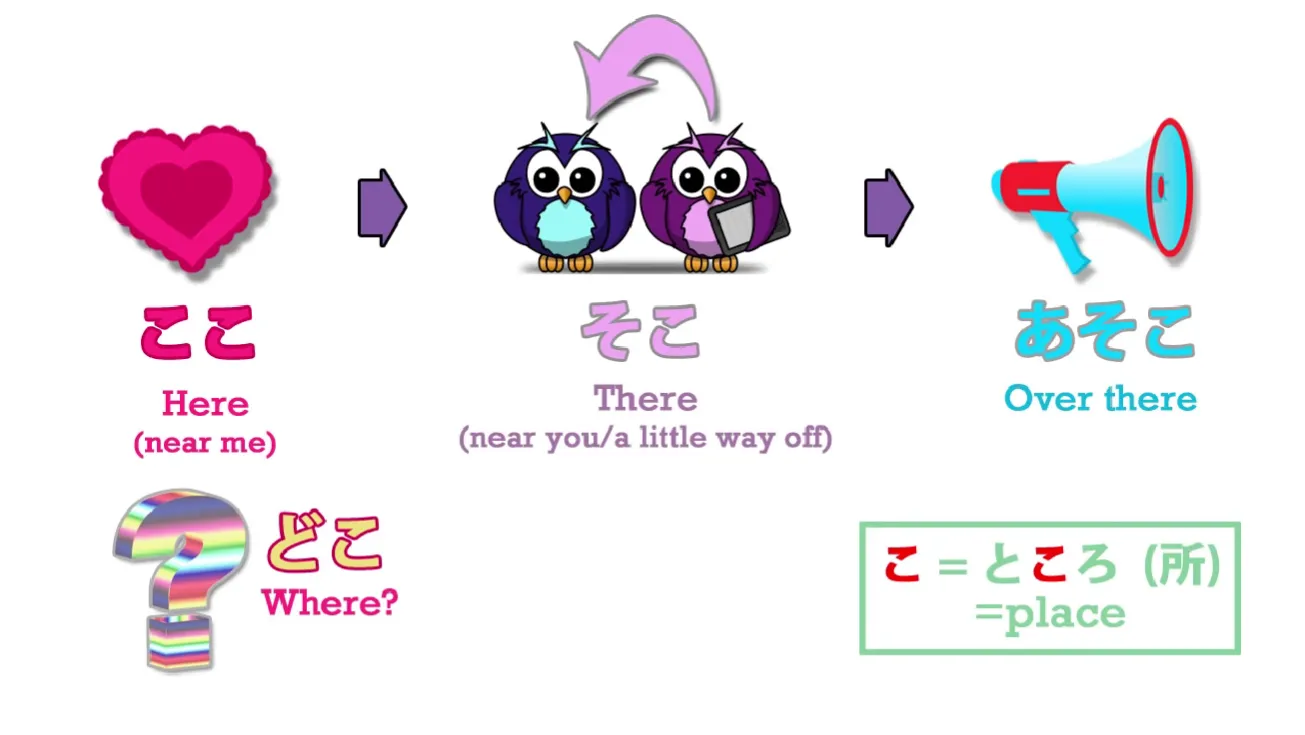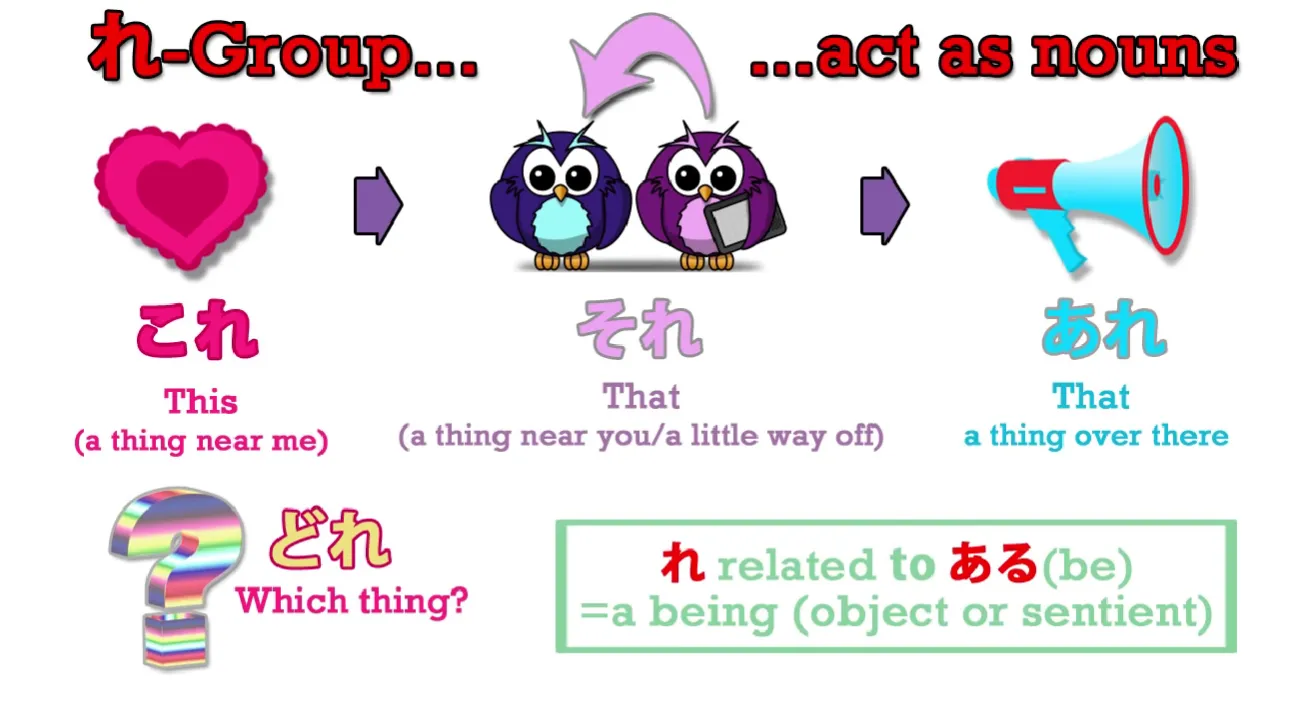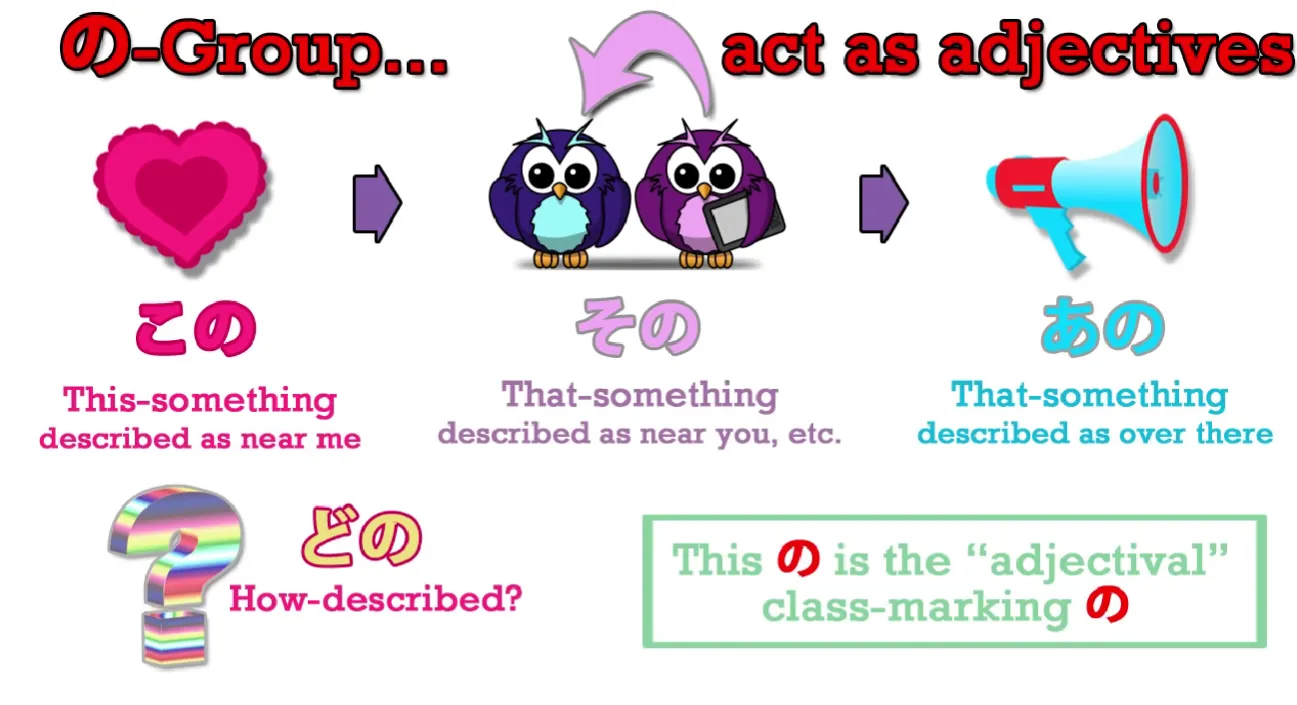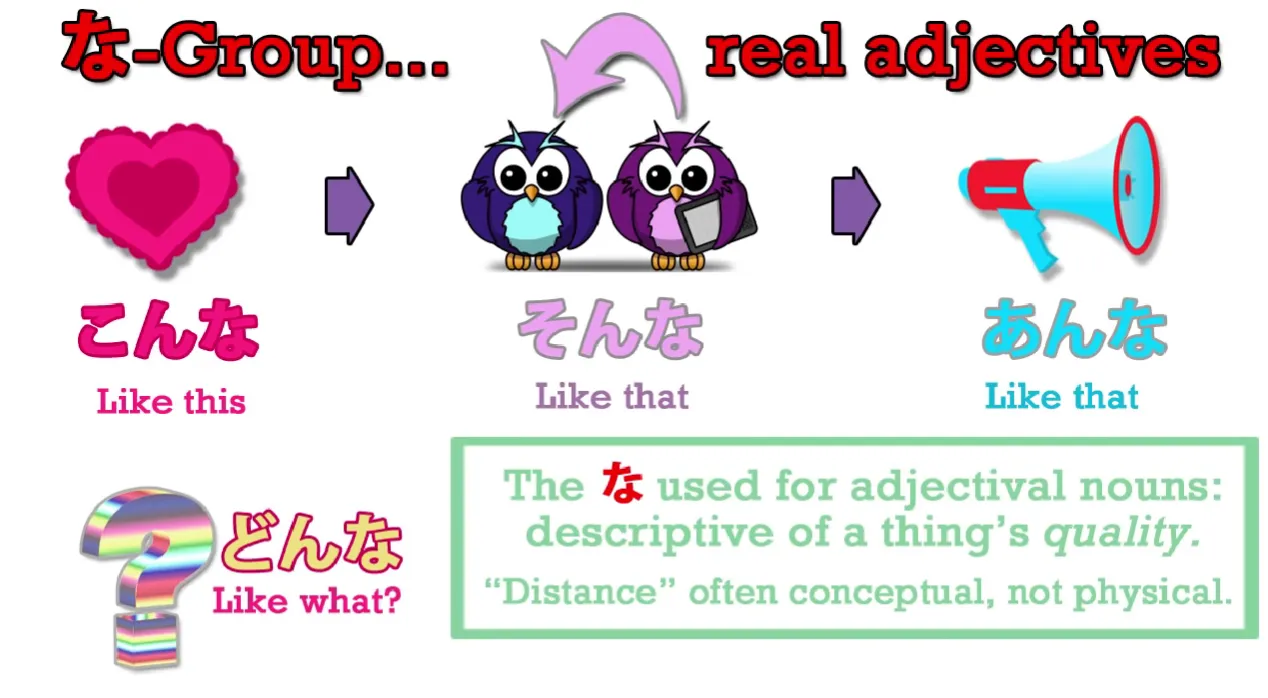それ・その・そんな・そう (Dùng hình ảnh là chính)
ここ, そこ, あそこ, どこ
 Ví dụ như:
Ví dụ như: Where is this place? ここはどこ? - As for this place, where?
これ, それ, あれ, どれ
 The れ-group is
The れ-group is これ, それ, あれ, どれ. And the thing here is that the -れ means a thing. こ- means a place, a location, and it can actually be written with the kanji for 所 - place. -れ is related to ある. ある means to be; this -れ means a being
Một ví dụ nhỏ có thể kể đến là: これは一体どういうことでしょうか?
この, その, あの, どの
 Now, this is the same の that we see in
Now, this is the same の that we see in この/その/あの/どの. So if we take a very basic textbook phrase like これは _(zeroが)_ ペンだ, we're saying, this - this being - _(it)_ is a pen. But if we say, **このペン** _(zeroが)_ は赤い - **This pen** _(it)_ is red. このペン - the here pen, the pen that belongs to the class of things that are here.
こんな, そんな, あんな, どんな
 So, we could say,
So, we could say, **こんな食べ物**が好きです - I like **food like this**. **そんなこと**がひどい - **That kind of thing**'s unkind/cruel.
こう, そう, ああ, どう
 Now, when we use こ-そ-あ-ど on their own and lengthen them with -う (or in the case of あ-, with an extra -あ) so they become
Now, when we use こ-そ-あ-ど on their own and lengthen them with -う (or in the case of あ-, with an extra -あ) so they become こう, そう, ああ, どう, then we are talking about the way something is or happens.
So what we are really saying is _(zeroが)_ **そう**だ/**そう**です - _(It)_ is **like that**. If we say, **そう**する we mean do **like that**;